This Inarizushi (Inari sushi) recipe was devised by a sushi chef of a popular restaurant.
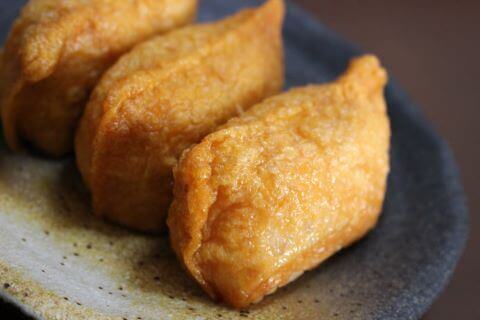 First of all, sushi rice made for Inarizushi can be used for a wide variety of uses including Uramaki and Chirashizushi, so it could be useful to learn. However, the recipe is slightly different than Nigiri sushi. The reason is that in the case of Nigiri sushi, the topping is typically one type of seafood combined with a sushi rice recipe that maximizes the flavor of that seafood. On the other hand, Inarizushi, Uramaki, etc., are filled with optional ingredients put together to enjoy multiple layers of flavors spread in your mouth. The sushi rice is essential to harmonize all the ingredients. Therefore, it is made with more sugar than Nigiri sushi. In addition to toning down the sourness of Vinegar, the sugar’s own richness works to bring out a mellow taste. Kombu is also added to the rice while it is cooking. The aim here is to create a synergy between the Inosinic acid contained in Kombu and the Umami of the other ingredients.
First of all, sushi rice made for Inarizushi can be used for a wide variety of uses including Uramaki and Chirashizushi, so it could be useful to learn. However, the recipe is slightly different than Nigiri sushi. The reason is that in the case of Nigiri sushi, the topping is typically one type of seafood combined with a sushi rice recipe that maximizes the flavor of that seafood. On the other hand, Inarizushi, Uramaki, etc., are filled with optional ingredients put together to enjoy multiple layers of flavors spread in your mouth. The sushi rice is essential to harmonize all the ingredients. Therefore, it is made with more sugar than Nigiri sushi. In addition to toning down the sourness of Vinegar, the sugar’s own richness works to bring out a mellow taste. Kombu is also added to the rice while it is cooking. The aim here is to create a synergy between the Inosinic acid contained in Kombu and the Umami of the other ingredients.
How to make Sushi rice
① Start by making Awasezu (the ingredients are included below). Put the Komezu, Cane sugar and salt in a saucepan and stir over low heat until the cane sugar melts. Then turn off the burner and allow it to cool.
② Next, make the sushi rice. Wash the rice and add a little less water than the measurement on the side of the rice cooker bowl. Add the Kombu and cook it to a consistency that is a bit tougher than usual. Don’t forget to take the Kombu out once the rice is done cooking.
③ Spread the cooked rice in as large a bowl as possible and pour all the Awasezu over it.
④ Use a paper fan to fan the rice while you mix it with a flat rice scoop (shamoji) by cutting through the rice at an angle, making sure not to mash the rice.
Ingredients of Sushi rice
Rice:540cc
Water:490~500cc
Komezu (rice vinegar):150cc
Cane sugar:4 tbsp and 1 tsp
Salt:2 tsp
Kombu:1 piece about 2 cm x 2 cm
How to make Inarizushi
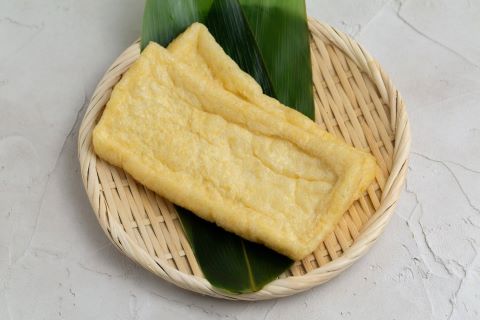 ① Spread the deep-fried tofu on a cutting board and roll it out with a rolling pin until it is completely flat. This helps to loosen the inside of the deep fried tofu so it will open easier. It might seem like a hassle, but it will help you make Inarizushi that looks even better.
① Spread the deep-fried tofu on a cutting board and roll it out with a rolling pin until it is completely flat. This helps to loosen the inside of the deep fried tofu so it will open easier. It might seem like a hassle, but it will help you make Inarizushi that looks even better.
② Boil water in a pot, add the deep fried tofu and boil for one minute to remove the oil. Drain it in a colander and let the deep fried tofu cool just enough to touch it before cutting it in half.
③ Combine the Nijiru ingredients in a saucepan and once the sugar has melted, add the cuts of deep fried tofu. Put a lid on the pot and allow to simmer for about five minutes. Turn off the burner and let cool. If you have a wooden or stainless steel drop lid you can use that too, but if not you can use aluminum foil and a flat dish instead.
④ Squeeze the juices out of the cooled deep fried tofu, and open the saccate, being careful not to tear it. Pack the prepared sushi rice and ingredients inside. Pack the sushi rice so that the center of gravity is toward the bottom and the Inari can stand up. If you keep the bottom flat, it won’t topple over. Make sure not to mash the grains while packing the rice in. You can add any ingredients that you like. You can even cut up the ingredients in advance and mix them in with the sushi rice. If you choose not to add additional ingredients and only make it with sushi rice, you can seal the deep fried tofu. Inarizushi filled with ingredients you can see is the open version and is the standard way of making it in places like Singapore and Paris.
Nijiru (broth) ingredients
Bonito stock: 500 cc
Soy sauce: 150 cc
Mirin: 200 cc
Cane sugar: 3 tbsp and 1 tsp
This recipe yields enough Nijiru for three sheets of deep fried tofu that are about 16 x 8 cm. The sushi restaurant recipe calls for boiling a large amount of Nijiru and simmer for a shorter amount of time. However in general home recipes call to boil until the Nijiru evaporates.
Inarizushi is a type of sushi that anyone can make easily. Just take these few tips from a sushi chef and you’ll be making delicious Inarizushi. Why not try it out as an appetizer for your next party? Just for your reference.
[sc_apply url=”https://sushiuniversity.jp/apply/”]
We hope this information will be helpful.

Revision date: January 6, 2022
Share this article
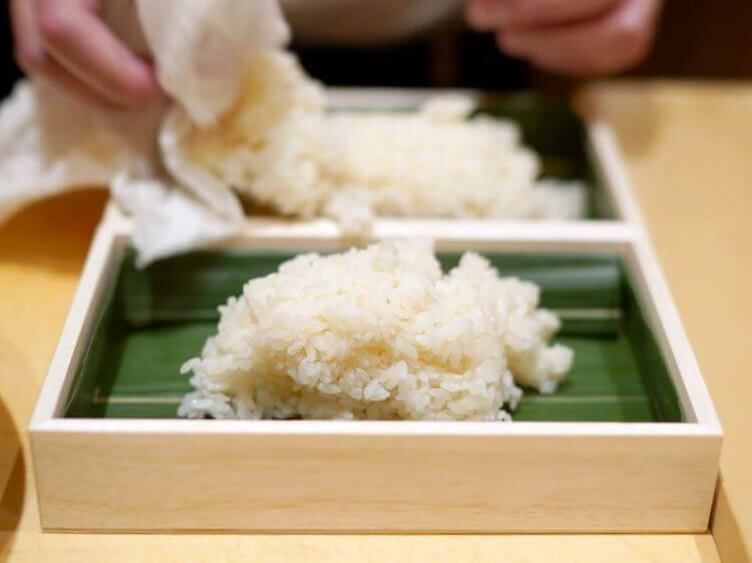 He gave out his hidden recipe, something that only a sushi chef can think of, and something you don’t see in those classic recipes. First, it might be hard to get at places like a supermarket, but he was telling us that using cane sugar (三温糖) and
He gave out his hidden recipe, something that only a sushi chef can think of, and something you don’t see in those classic recipes. First, it might be hard to get at places like a supermarket, but he was telling us that using cane sugar (三温糖) and 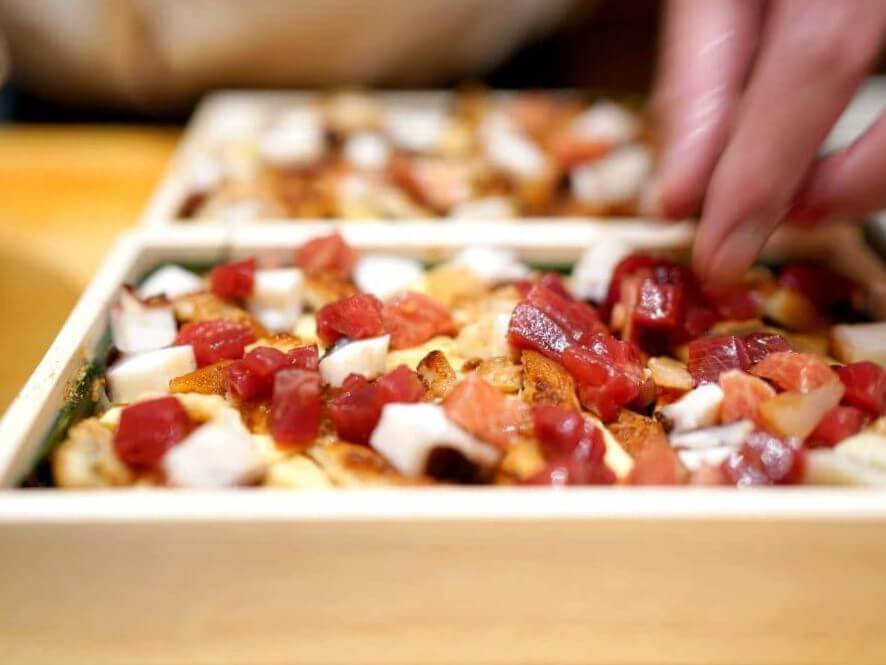 When you make chirashi sushi, don’t push the sushi rice too hard to squeeze in a container. Try to put it in softly as if letting the air in.
When you make chirashi sushi, don’t push the sushi rice too hard to squeeze in a container. Try to put it in softly as if letting the air in.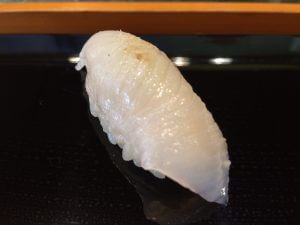 The balance between Shari (vinegar rice) and the topping is important in sushi. No matter how good the topping, the sushi won’t be good if the Shari isn’t right for it. More restaurants have been using red vinegar lately, but even if you use a Shari with a strong taste like red vinegar, the balance will be destroyed if the topping has a weaker flavor. Seasoning that goes well with various toppings that doesn’t stand out too much is ideal.
The balance between Shari (vinegar rice) and the topping is important in sushi. No matter how good the topping, the sushi won’t be good if the Shari isn’t right for it. More restaurants have been using red vinegar lately, but even if you use a Shari with a strong taste like red vinegar, the balance will be destroyed if the topping has a weaker flavor. Seasoning that goes well with various toppings that doesn’t stand out too much is ideal.